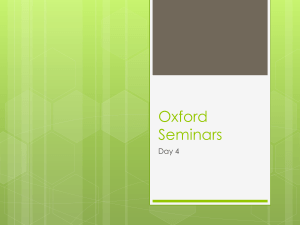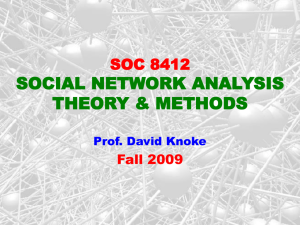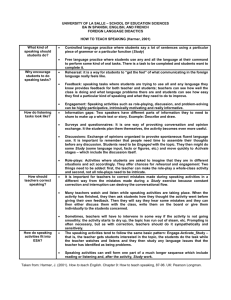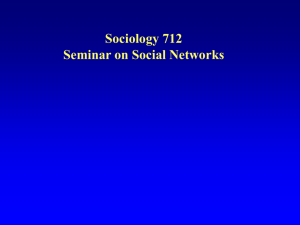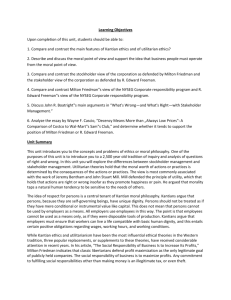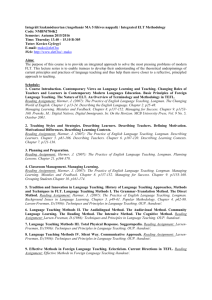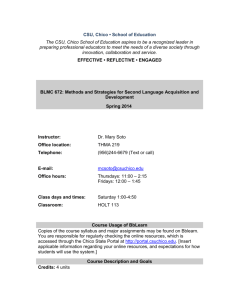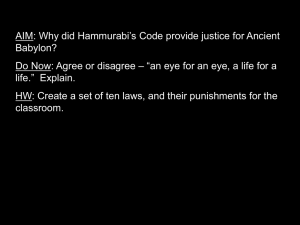rationale - WordPress.com
advertisement
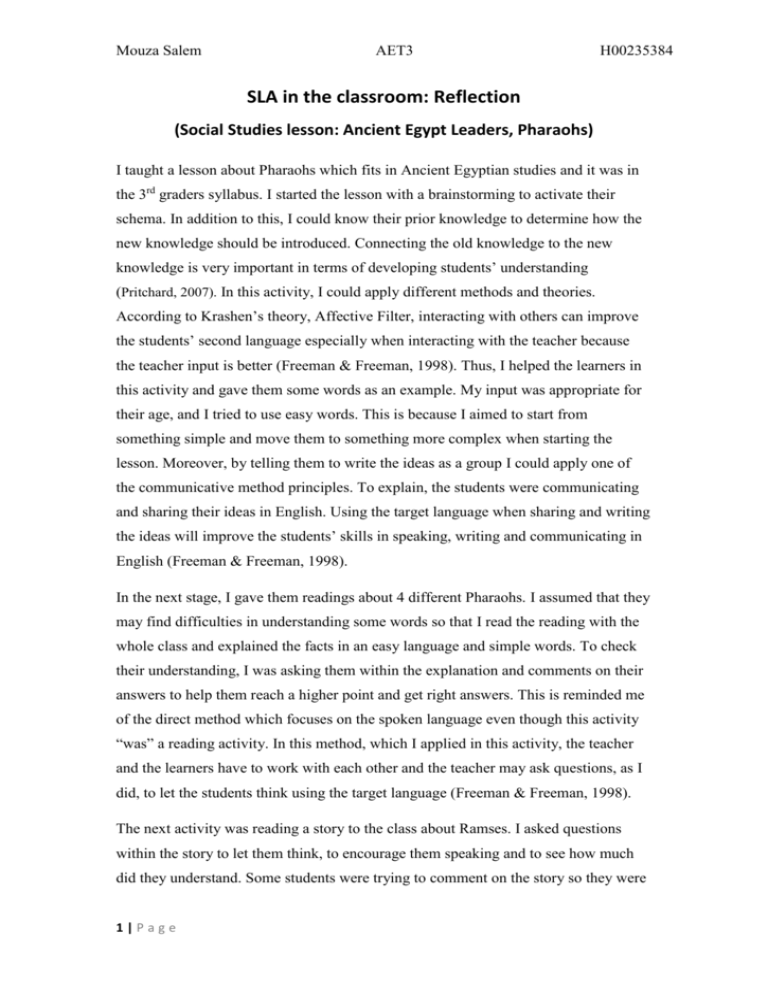
Mouza Salem AET3 H00235384 SLA in the classroom: Reflection (Social Studies lesson: Ancient Egypt Leaders, Pharaohs) I taught a lesson about Pharaohs which fits in Ancient Egyptian studies and it was in the 3rd graders syllabus. I started the lesson with a brainstorming to activate their schema. In addition to this, I could know their prior knowledge to determine how the new knowledge should be introduced. Connecting the old knowledge to the new knowledge is very important in terms of developing students’ understanding (Pritchard, 2007). In this activity, I could apply different methods and theories. According to Krashen’s theory, Affective Filter, interacting with others can improve the students’ second language especially when interacting with the teacher because the teacher input is better (Freeman & Freeman, 1998). Thus, I helped the learners in this activity and gave them some words as an example. My input was appropriate for their age, and I tried to use easy words. This is because I aimed to start from something simple and move them to something more complex when starting the lesson. Moreover, by telling them to write the ideas as a group I could apply one of the communicative method principles. To explain, the students were communicating and sharing their ideas in English. Using the target language when sharing and writing the ideas will improve the students’ skills in speaking, writing and communicating in English (Freeman & Freeman, 1998). In the next stage, I gave them readings about 4 different Pharaohs. I assumed that they may find difficulties in understanding some words so that I read the reading with the whole class and explained the facts in an easy language and simple words. To check their understanding, I was asking them within the explanation and comments on their answers to help them reach a higher point and get right answers. This is reminded me of the direct method which focuses on the spoken language even though this activity “was” a reading activity. In this method, which I applied in this activity, the teacher and the learners have to work with each other and the teacher may ask questions, as I did, to let the students think using the target language (Freeman & Freeman, 1998). The next activity was reading a story to the class about Ramses. I asked questions within the story to let them think, to encourage them speaking and to see how much did they understand. Some students were trying to comment on the story so they were 1|Page Mouza Salem AET3 H00235384 using Arabic. This problem which teachers may face sometimes can be solved in many ways. The strategy I used was responding to those who are using English only. Jeremy Harmer said in his book “how to teach English”, that by not responding to the students who use their first language they will understand from the teacher response that they need to use English to express their ideas (Harmer, 1998). Fortunately, the technique worked well with most of them and they did express their ideas in English. It is important to note here that the story could develop the students’ listening skills and using the PowerPoint slides to show them the text made it much better. Following a written text while listening makes it easier for the students to keep the information and store it (Nation & Newton, 2009). According to Harmer, it is an effective way for the students to notice the language features (Harmer, 2001). The usage of ICT in this stage made my lesson better, I believe. This is because the students today have become fascinated by the technology around them, and so they like their teacher to use technology. By the end of the lesson, the students made fantastic posters. I could see by moving around them how much they accomplished in this lesson. When I asked them to evaluate themselves, they were satisfied and I was also satisfied on the progress they achieved. Moreover, they were able to use English fluently in describing their posters so the learning objectives were achieved successfully. 2|Page Mouza Salem AET3 H00235384 Bibliography: Freeman, Y. & Freeman, D. (1998). ESL/EFL Teaching: Principles for Success. Portsmouth: Heinemann Harmer, J. (1998). How to Teach English: An Introduction to the Practice of English Language Teaching (1st ed.). Harlow: Longman Harmer, J. (2001). The Practice of English Language Teaching. Harlow: P. Longman Nation, S. & Newton, J. (2009). Teaching ESL/EFL Listening and Speaking (1st ed.). New York: Routledge Pritchard, A. (2007). Effective Teaching with Internet Technologies: Pedagogy and Practice. California: Sage Publications Inc 3|Page
